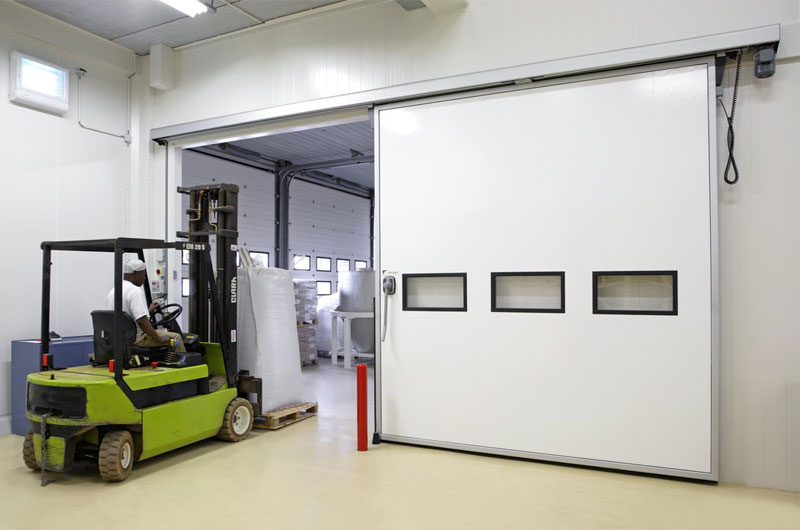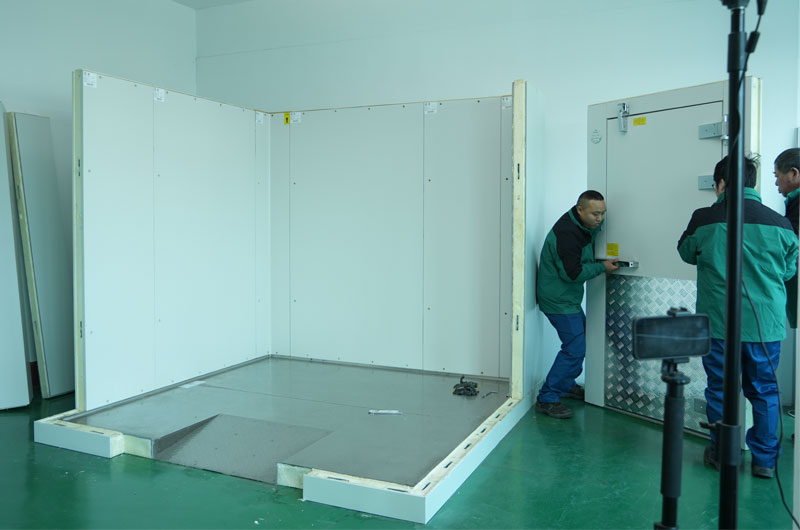Improper installation of cold rooms can lead to performance failures, increased energy consumption, or even complete system breakdowns. To ensure a reliable and long-lasting cold storage system, it’s essential to avoid common pitfalls during installation.
Here are the top 10 mistakes to avoid when installing a cold room:
1. Poor Site Selection
One of the first and most critical steps in installing a cold room is choosing the right location. Unfortunately, many installations begin without proper consideration of the site, which can lead to a variety of problems.
Common issues:
- Limited space for future expansion or maintenance
- Exposure to direct sunlight, increasing cooling loads
- Proximity to heat-generating equipment like ovens or boilers
- Poor access for loading/unloading goods
Solution:
Choose a location that is shaded, well-ventilated, accessible, and isolated from heat sources. Also, plan for logistical efficiency and future scaling needs.
2. Incorrect Sizing of the Cold Room
A cold room that is too small won’t accommodate growth, and one that’s too large will result in wasted energy and operational costs. Many businesses underestimate or overestimate their storage requirements.
Common issues:
- Insufficient storage leading to overloading
- Excess energy consumption due to an oversized room
- Improper air circulation due to unused space
Solution:
Thoroughly assess both your current and future storage requirements. Consider the volume, type of goods, turnover rate, and shelving systems to calculate the right size.
3. Underestimating Insulation Quality
Insulation is the backbone of any cold room. Using substandard or incorrect insulation materials can significantly reduce the cold room’s efficiency.
Common issues:
- Higher energy costs due to heat leakage
- Temperature fluctuations inside the cold room
- Moisture build-up and mold growth
Solution:
Use high-quality insulation panels, preferably with polyurethane foam (PUF) or PIR (polyisocyanurate) core, with adequate thickness based on the temperature requirements. Ensure that all joints are properly sealed.
4. Improper Refrigeration Unit Selection
The refrigeration unit is the heart of the cold room. Choosing an underpowered or oversized refrigeration system can lead to inefficient performance and high operational costs.
Common issues:
- Inability to maintain desired temperatures
- Frequent system cycling and wear
- Higher energy bills
Solution:
Work with a professional HVAC or refrigeration expert to determine the right capacity based on cold room size, insulation, ambient conditions, and usage patterns.
5. Ignoring Airflow and Ventilation Needs
Poor internal airflow leads to hot and cold spots within the cold room, potentially damaging stored products. Additionally, neglecting external ventilation for the compressor system can cause overheating.
Common issues:
- Uneven cooling across the room
- Condensation and ice build-up
- Overheating of the refrigeration system
Solution:
Ensure proper placement of evaporator fans and racking systems to allow unrestricted airflow. Also, maintain adequate ventilation around the condenser unit to dissipate heat effectively.
6. Inadequate Door Sealing and Placement

Cold room doors are one of the most frequent points of temperature loss. Improper sealing or frequent opening can compromise the room’s integrity.
Common issues:
- Heat infiltration through poorly sealed doors
- Condensation around the door frame
- Difficulty maintaining internal temperature
Solution:
Use high-quality insulated doors with proper gaskets and automatic closers. Consider air curtains or PVC strip curtains in high-traffic areas to reduce temperature loss.
7. Not Installing a Backup System
Power failures or equipment malfunctions can cause catastrophic product loss if there’s no backup system in place. Yet many businesses skip this critical step to save costs.
Common issues:
- Spoilage of temperature-sensitive products
- Regulatory violations and fines
- Damage to reputation
Solution:
Install a backup power system like a generator and consider remote monitoring systems with alert features. Redundancy in critical components such as compressors is also advisable for large cold rooms.
8. Neglecting Floor Insulation and Drainage
Cold room floors are often overlooked, yet they play a crucial role in maintaining temperature and hygiene. Poorly insulated floors lead to energy loss, condensation, and even structural damage.
Common issues:
- Frost heave causing floor cracks
- Water pooling and microbial growth
- Heat ingress from below
Solution:
Use proper floor insulation with vapor barriers. Install non-slip, easy-to-clean surfaces with appropriate floor drains for hygienic water removal.
9. Overlooking Regulatory and Hygiene Requirements
Failure to comply with food safety, pharmaceutical storage, or HACCP standards can result in penalties or product rejection.
Common issues:
- Unapproved materials or layout
- Difficulty cleaning corners and joints
- Not comply with fire safety regulations or accessibility standards
Solution:
Ensure compliance with local health codes, HACCP guidelines, FDA/USDA requirements, or industry-specific regulations. Choose hygienic materials and plan for easy cleaning and inspection.
10. Lack of Professional Installation and Commissioning
Cutting corners by hiring unqualified installers or skipping system testing can lead to costly repairs and performance issues down the road.
Common issues:
- Faulty electrical connections
- Refrigerant leaks
- Inaccurate temperature control
Solution:
Hire certified professionals with experience in cold room installation. Conduct thorough testing and commissioning, including temperature validation, leak detection, and system performance under load.

